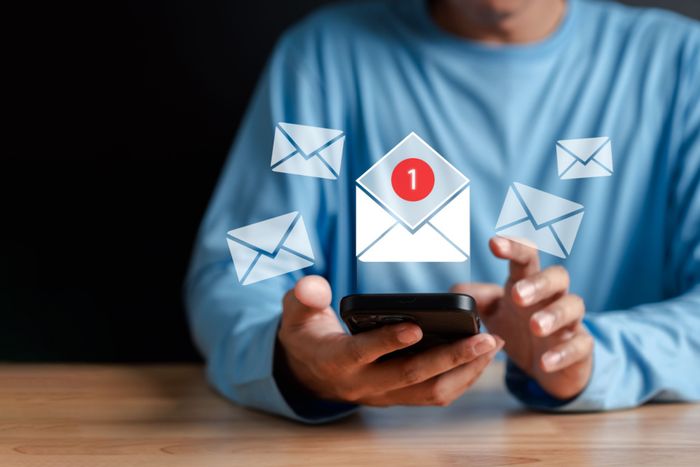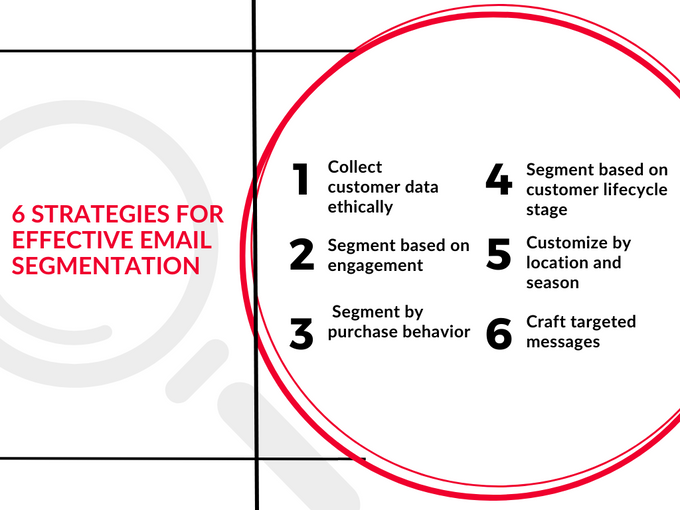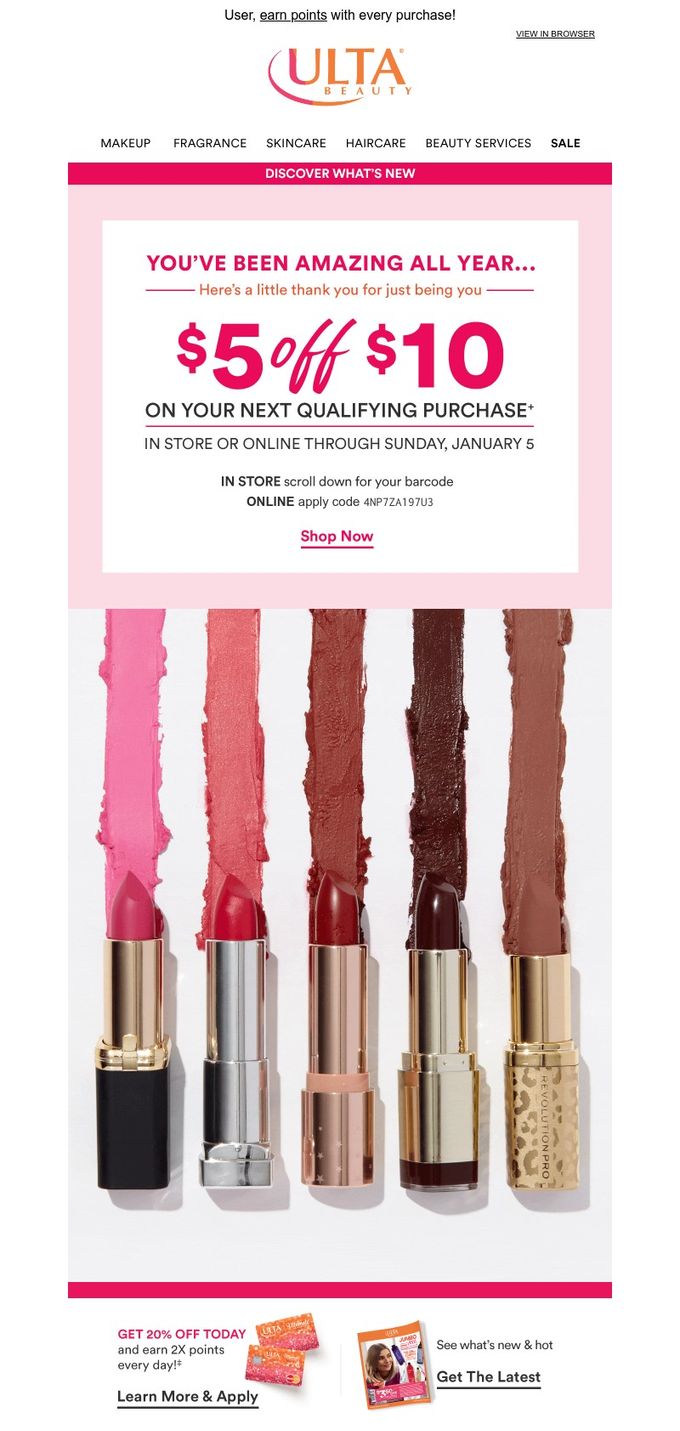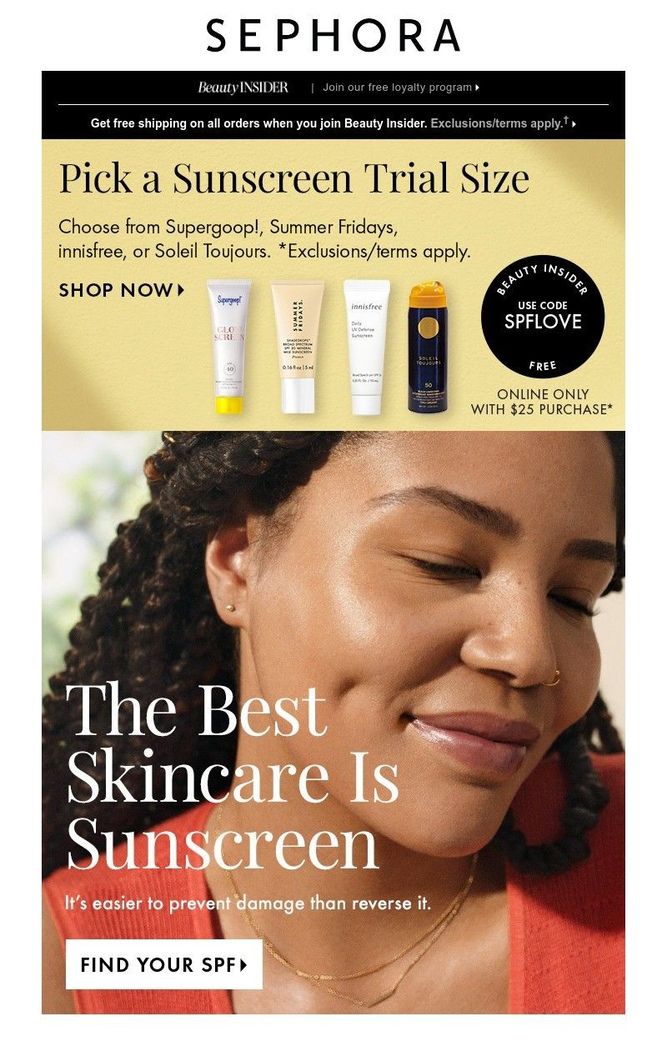The Science of Effective Email Segmentation and Targeted Messaging
It's more important than ever to offer your customers relevant emails. Tailor your list with segmented sends and personalized content.
Published October 14, 2024.

Email marketing is often overlooked for newer, shinier digital channels for marketing. But this channel continues to be one of the greatest—and highest converting—allies of any website.
The reason is simple: most users will see an email notification.
Where you go from there depends on the content of the emails themselves. This is where email segmentation steps in. It allows you to break your email list into audiences so you can tailor content to each group.
Below, we'll explore effective email segmentation strategies, including collecting data effectively and how to craft targeted messaging.
» Want better email subject lines? Discover how to personalize email subjects.
Meet the Expert
Sandra Stepan, co-founder of SnapAdvantage, has 10 years in digital marketing, focusing on e-commerce expansion. With success in building 7-figure brands, she amplifies growth for top brands. An industry leader, Sandra is a trusted expert for marketing excellence.
What Is Email Segmentation?
Email segmentation is the practice of dividing your email list into audiences. These groups are based on criteria like interests, behaviors, or where they live.
Segmentation lets you send targeted emails that are more relevant to each audience. The more specific the audience, the more personalization you can include. And this can lead to more people opening your emails, clicking on links, and buying your products.
A common misconception about email segmentation is that it revolves around only basic demographics, like age and gender.
The truth is, effective segmentation involves a broad range of factors, including:
- Behavior
- Purchase history
- Engagement levels
- Preferences
6 Strategies For Effective Email Segmentation
1. Collect Customer Data Ethically
Before you can segment your email list, you'll need to collect data. You can get this from newsletters or website sign-ups and purchases. Tools like website analytics, surveys, and engagement metrics can give you a pretty good picture of how your users interact with your site.
Whatever way you choose to collect your data, it’s important to adhere to ethical standards in data collection. Different countries and regions have different regulations. And don’t forget to let your customers know how their data is being used. It’s all about building trust and keeping things transparent.
2. Segment Based on Engagement
Engagement-based segmentation is about understanding how your subscribers interact with your emails. It’s like sorting your email list into different audiences based on things like open rates, click-through rates, purchase history, and overall email interaction.
This lets you tailor your communication to each group.
Say you’re a retail company. You could send exclusive offers to your super-engaged subscribers—the ones who are always opening your emails and clicking through. For the less active ones, you might run re-engagement campaigns with tempting offers like free shipping.
3. Segment by Purchase Behavior
Purchase behavior segmentation focuses on past buying patterns, and considers factors like:
- Frequency
- Value
- Product types preferences
- Average order value
The goal is to generate personalized product recommendations and promotions aligned with each customer's preferences.
For instance, customers whose average order value exceeds a certain amount (e.g., more than $100) might be placed in a “High Spending” segment.
Or if your business offers a variety of products, you could create segments based on the types of products customers typically purchase. For example, customers who frequently purchase a certain type of product (e.g., shoes) could be placed in a “Shoe Lovers” segment.
4. Segment Based on Customer Lifecycle Stage
Customer lifecycle stage segmentation involves categorizing customers based on their position in the buying journey.
The aim is to deliver content appropriate for each stage of the customer journey.
From new subscribers just getting to know your brand, to loyal customers who’ve been with you for a while, each stage requires different content.
Here’s how it works:
- You sort customers based on things like how long they’ve been subscribed, how often they buy, and how they’ve interacted with past marketing campaigns.
- Then, you tailor your content to each stage. For example, new subscribers might get a welcome message introducing your brand. But for loyal customers, you’d want to skip the intro and send content that rewards their loyalty.
5. Customize by Location and Season
Brands like Sephora tailor email campaigns based on the customer's location or current season. For example, those experiencing summer in the Northern Hemisphere will receive emails featuring products like SPF and sun care items. Their Southern Hemisphere counterparts will get something more winter-friendly.
» Looking for more ways to split your list? Discover these customer segmentation strategies.
6. Craft Targeted Messages
Targeted messaging means tailoring your email content to different segments of your audience, making them more relevant and engaging.
Segmentation alone is not enough. Develop unique content for different segments, addressing their distinct interests and needs.
Personalizing emails for specific segments speaks more directly to your audience's needs and habits. This translates to stronger customer relationships, increased sales, and improved brand loyalty. Implement personalization techniques, starting with simple tactics like addressing customers by their names. Use their past interactions and pay attention to content preferences.
» Want to make it personal? Check out everything you should personalize in eCommerce store.
Best Tools for AI-Driven Segmentation
AI and machine learning are rapidly becoming essential technology for email marketers. That's because they can pick up intricate patterns from your data, taking the guesswork out of segmenting the list. AI-powered email marketing tools can:
- Automate Segmentation: AI uses algorithms to categorize subscribers based on their behaviors and preferences. These algorithms analyze the language in emails to identify patterns and intent.
- Predict Future Behaviors: Predictive behavior modeling is a machine learning technique that uses historical data to predict future behavior. For example, it can use customers’ past purchases and buying habits to predict future purchases.
- Provide Granular Customer Insights: AI-driven segmentation provides granular insights into customer preferences. With this level of detail, marketers can create highly targeted campaigns that resonate with specific segments of their audience.
The following two tools are a good way to get you started on collecting customer data and creating email segments:
- Fast Simon: Our AI Email & SMS Marketing technology was built with eCommerce shop owners in mind. So it's tailored to engaging with customers and optimizing conversions.
- Klaviyo: Klaviyo stands out for its robust purchase behavior segmentation and extensive data capabilities. These are popular among marketers looking to leverage AI in their email strategies.
- MailChimp: MailChimp's AI is known for its predictive analytics in segmentation. The platform utilizes machine learning to analyze user data and optimize email campaigns.
» What are the benefits of AI in email? Here's how to use AI in personalized email marketing.
Simon Says: Speed Up Success with Segmentation
While email segmentation is powerful and useful, it is not an end goal in itself. Make sure you:
- Prioritize Quality Over Quantity: Prioritize delivering quality content over the number of emails. Email segmentation is a tool to enhance the quality of your email marketing efforts.
- Build Meaningful Relationships: Your subscribers are more than just a list; they are a community that wants to connect with your brand. Foster this relationship by tailoring your email marketing to resonate with their needs and preferences.
- Never Stop Testing: Even with all the expert advice, your brand and audience are unique. Continuously test different segmentation strategies, take note of the results, and apply insights gained from successful tests.
Last but not least, stay on top of privacy policy changes.
As of February 2024, email marketers need to be vigilant about email quality. Platforms like Google can penalize emails with high spam or complaint rates.
Ensure you deliver high-quality, relevant content to your audience. This will propel your open rates and build a community of happy, returning customers.
» Find inspiration with these email remarketing campaign examples.









